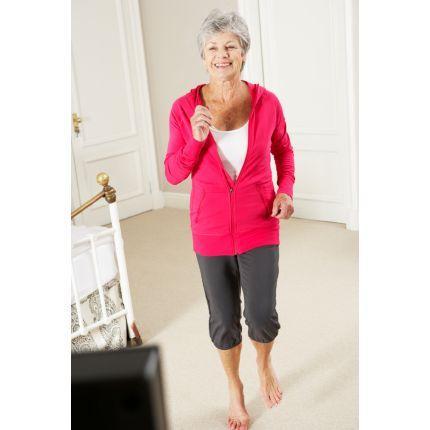Today marks the 7th annual Falls Prevention Awareness Day. This year’s theme is Strong Today, Falls Free Tomorrow. According to Centers for Disease Control and Prevention, one in three adults over the age of 65 will suffer a serious fall this year. Twenty to thirty percent of older adults who fall will suffer injuries such as hip fractures and head traumas, which can hinder their independence. Many of these falls occur at home, particularly in the bathroom or while the individual is trying to get to the bathroom. By following these safety tips below, you can help your elderly loved one stay balanced and free of fall risks:
- Tidy up. Make sure the pathway to the toilet is open and free of clutter. You don’t want your loved one to trip over a box or stumble over an electrical cord, especially when they’re in a rush.
-
 Exercise daily. Many elderly adults don’t get enough exercise, which can make their limbs and joints stiff. Regular exercise can help improve blood circulation, balance and flexibility. Encourage your loved one to get at least 30 minutes of exercise every day. Activities may include yoga, aerobics, swimming, or simply walks around the neighborhood.
Exercise daily. Many elderly adults don’t get enough exercise, which can make their limbs and joints stiff. Regular exercise can help improve blood circulation, balance and flexibility. Encourage your loved one to get at least 30 minutes of exercise every day. Activities may include yoga, aerobics, swimming, or simply walks around the neighborhood. - Install bathroom safety tools. From bath benches to grab bars, there are an abundance of tools designed to keep your loved one safe in the bathroom. Elevated toilet seats help take the pressure of weak knees and safety grab bars offer extra balance while getting in and out of bathtubs and getting on and off the toilet. Don’t forget simple bathroom necessities, such as non-slip bath mats and sticky tub decals, to prevent falls.
- Wear appropriate clothing. Those who suffer from chronic arthritis, especially in the hands, should consider wearing clothing without zippers or buttons. Opt for bottoms with elastic waistbands to make it easier to remove clothing when using the bathroom.
- Get a checkup. “Doctors are often an important first checkpoint for falls prevention. Asking about an individual’s history of falling, and observing him or her doing specific in-office activities, such as getting up from a chair and walking steadily, helps identify higher-than-average risk,” Joseph Gallagher, a licensed physical therapist with Visiting Nurse Service of New York (VNSNY), said in a statement. As we grow older, our senses start to decline, so it’s also imperative for your loved one to get his/her hearing and vision checked.
For more information on how to prevent falls in the elderly, check out National Council on Aging (NCOA).
